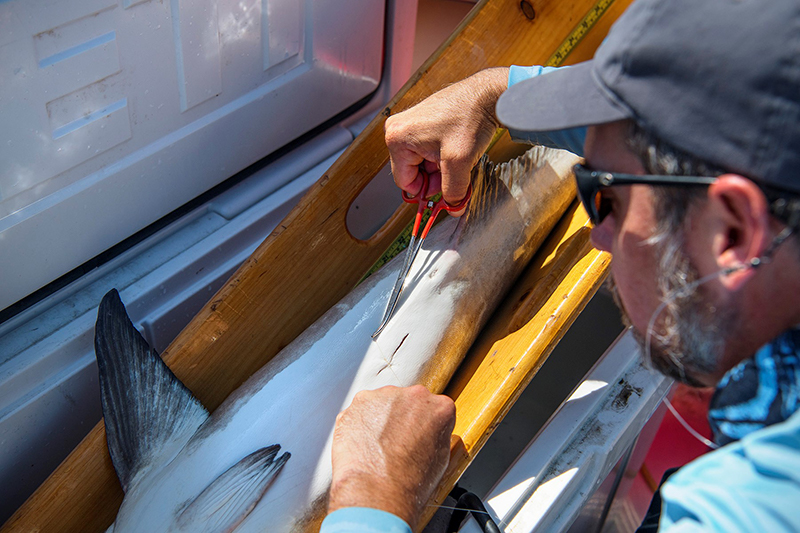Sept 22, 2020

For over two decades, the South Carolina Department of Natural Resources (SCDNR) has been a leader in cobia research. Most recently, SCDNR biologists have been tracking the movement of cobia throughout the southeast using a technology called acoustic telemetry. Valuable support to that effort has come via Coastal Conservation Association South Carolina's (CCA SC) habitat program, the Topwater Action Campaign. In collaboration with long time habitat partner Sea Hunt Boat Company, CCA SC donated 20 acoustic transmitters and four receivers to SCDNR, allowing biologists to increase the number of fish tagged and expand their receiver coverage to new areas off the South Carolina coast. The receiver stations, dubbed the "CCA Triangle," occur on three artificial reefs along the central coast where cobia are commonly encountered.
"CCA SC considers cobia to be one of the premier recreational fisheries in the Palmetto State and our organization has placed a high priority on the sustainability of the species for recreational anglers to enjoy," said Scott Whitaker, CCA SC executive director. "Between working with legislators to obtain gamefish status for the species and now with our great partners at Sea Hunt Boat Company to fund a needed program focused on tracking and monitoring of the species, we are securing both meaningful regulation and scientific research in pursuit of wise stewardship for cobia."
"I’ve always been an outdoorsman," said Lee. "I was raised on a family farm, where you hunted and fished and camped out and had major respect for the outdoors."
The technology relies on a network of more than 850 listening devices (receivers) located throughout much of the East Coast, Caribbean, and Gulf of Mexico. Cobia are captured via rod and reel and an electronic tag is surgically implanted into the body of the fish. The tag emits a "ping" that can be recorded (a detection) when a cobia travels within ¼ mile of any one of these receivers. New battery technology allows these tags to now function for 10 years or more. When enough fish are tagged and detected on different receivers, patterns in migration begin to emerge.
SCDNR initially partnered with Florida FWC and Kennedy Space Center on this project and to date have tagged 239 cobia from Florida to South Carolina, resulting in over 100,000 detections on 579 different receivers. In recent years, biologists in North Carolina and Virginia have joined the effort, allowing for a more complete picture of regional migratory patterns.
According to Matt Perkinson, SCDNR saltwater fishing outreach coordinator, "these acoustic tags have helped us narrow down where the break between Gulf and Atlantic cobia populations occurs along the east coast of Florida and given us more insight on how cobia tend to move when they are in our area. We wouldn’t be able to collect this type of data with conventional tags alone. We’ve learned a ton about cobia since we began using these tags, but there’s still a lot more to learn. By continuing to put out more tags and receivers, we can follow patterns in migration and even evaluate things like population trends that will help us manage the fishery most effectively."
In addition to cobia, over 60 different species including sturgeon, white sharks, southern flounder, sea turtles are commonly detected by these receivers, meaning that any increase in coverage benefits a multitude of ongoing research projects.
"CCA South Carolina has been an important supporter of cobia research in South Carolina and we look forward to continuing that relationship moving forward," Perkinson said.
For additional information, contact:
Erin Weeks at (843) 729-3531
WeeksE@dnr.sc.gov



